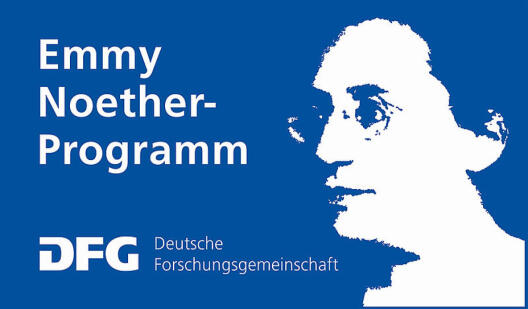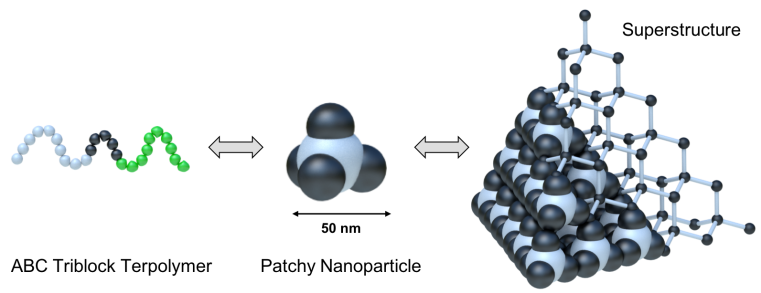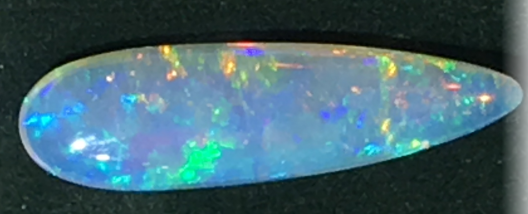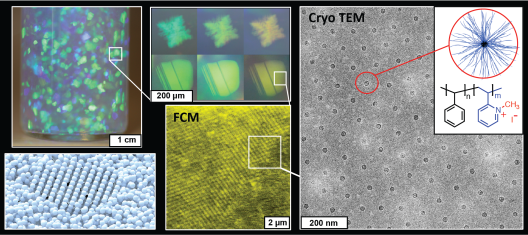Emmy Noether-Program

The controlled self-assembly of nanoparticle lattices in the range of 50-500 nm remains challenging. There is a lack of nano-sized building blocks with low size-dispersity and high resolution of directional interaction patterns for the long-range ordering of nanoparticle lattices. This Emmy Noether project seeks to bring together concepts of block copolymer synthesis, supramolecular self-assembly, and supracolloidal cluster formation to create open nanoparticle lattices with well-defined symmetry. The ultimate goal is to self-assemble a diamond nanoparticle lattice with promising photonic properties.
To approach these aims, we first synthesize ABC triblock terpolymers with suitable compositions, which directly translate into the number of surface beads or patches. These patches are incompatible with the core and arrange in a geometric order. This order controls directionality of aggregation, potentially leading to nanoparticle lattices with symmetries reflecting those of the patch geometry.



